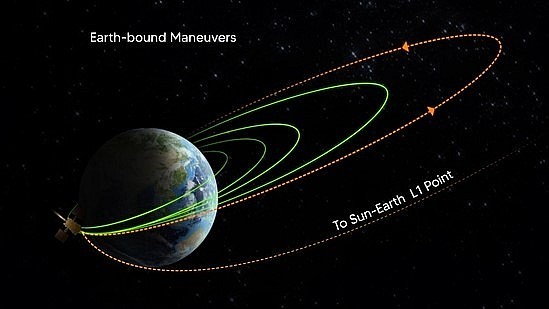 |
India’s first space-based mission to study the Sun, Aditya L1 spacecraft, successfully completed its fourth earth-bound manoeuvre, according to ISRO.
ISRO’s ground stations at Mauritius, Bengaluru, SDSC-SHAR, and Port Blair tracked the satellite during this operation, while a transportable terminal stationed in the Fiji islands supported post-burn operations, the space agency said on X, formerly known as Twitter.
The spacecraft has attained a new orbit of 256 km x 121973 km. The next manoeuvre, Trans-Lagrangean Point 1 Insertion (TL1I), is scheduled for September 19, around 02:00 Hrs. IST.
Aditya-L1 is the first Indian space-based observatory to study the Sun from a halo orbit around the first Sun-Earth Lagrangian point (L1), approximately 1.5 million km from Earth.
The first, second, and third earth-bound manoeuvres were successfully performed on September 3, 5, and 10, respectively.
These manoeuvres are part of the spacecraft’s 16-day journey around Earth to gain the necessary velocity for its further journey to L1.
Upon arrival at the L1 point, another manoeuvre will bind Aditya L1 to an orbit around L1, a balanced gravitational location between Earth and the Sun.
The satellite will orbit around L1 in an irregularly shaped orbit in a plane roughly perpendicular to the line joining Earth and the Sun throughout its mission.
ISRO’s Polar Satellite Launch Vehicle (PSLV-C57) successfully launched the Aditya-L1 spacecraft from the Second Launch Pad of Satish Dhawan Space Centre (SDSC), Sriharikota, on September 2.
The spacecraft was injected into an elliptical orbit of 235×19500 km around Earth after a flight duration of 63 minutes and 20 seconds.
Placed in the halo orbit around the L1 point, the spacecraft will have the advantage of continuously viewing the Sun without any occultation/eclipses, providing real-time observations of solar activities and their effect on space weather.
Aditya-L1 carries seven scientific payloads developed by ISRO and national research laboratories to observe the photosphere, chromosphere, and the outermost layers of the Sun. These payloads will provide important scientific studies of solar dynamics and the interplanetary medium.
Lagrangian points are parking areas between Earth and the Sun where small objects can stay with reduced fuel consumption. At a Lagrange point, the gravitational pull of the Sun and Earth equals the necessary centripetal force for a small object to move with them.








